At 9:10 a.m. on October 9th, the Chinese climber, He Jing, made history by submitting the 8,027-meter Shishapangma without supplemental oxygen, becoming the first climber from China to achieve this feat on all 14 peaks above 8,000 meters.
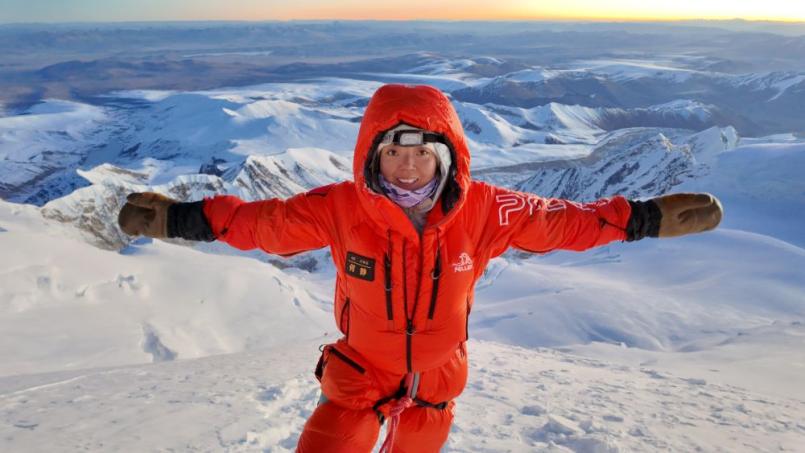
On October 9, He Jing reached the summit of Mount Shishapangma.
Climbing without supplemental oxygen is an immense test of a climber’s physical endurance and mental resilience, especially at altitudes above 8,000 meters, where oxygen levels are critically low.
The world’s 14 independent peaks over 8,000 meters are all situated in the Himalayas and Karakoram ranges. Shishapangma, which lies entirely within Nyalam County of Shigatse, Tibet, ranks as the fourteenth-highest peak globally and is the sole 8,000-meter summit located fully within China’s borders.
He Jing began climbing without supplemental oxygen in 2017. Since then, she has successfully summited Manaslu (2017), Makalu (2018), Annapurna (2019), Dhaulagiri (2021), Everest (2022), Lhotse (2022), K2 (2022), Broad Peak (2022), Kangchenjunga (2023), Nanga Parbat (2023), Gasherbrum II (2023), Gasherbrum I (2023), and Cho Oyu (2023). Shishapangma marks the final peak in her journey to conquer all 14 of the world’s 8,000-meter mountains without supplemental oxygen.
Passion
An 8,000-meter peak. A female climber. No supplemental oxygen. The combination is awe-inspiring. So what kept her going? “Pure passion for the mountains,” says He Jing.
He Jing, a native of Gaoling, Shaanxi Province, grew up in the heart of the Guanzhong Plain. Until the age of 18, she had never seen a mountain. It wasn’t until 2006 that she laid eyes on the Qinling Mountains for the first time. Recalling that moment, she said, “Looking at the towering ridges in the distance, I couldn’t help but wonder—what lies beyond those even higher peaks? What kind of world awaits there?” It was then that the seed of exploration was planted in her heart.
In the years that followed, He Jing remained passionate about outdoor activities such as hiking and mountaineering. In 2012, at a friend’s invitation, He Jing made her first ascent of a snow-capped peak - Mount Siguniang. “As we approached the summit, I saw the sunset casting a golden glow on the endless white snow. At that moment, I felt how small we are in the face of nature, and how vast and boundless the world truly is. It freed me from the worries and burdens of everyday life.”
Over the years, she has climbed nearly every snow-capped mountain across China, from Sichuan and Gansu to Qinghai and Xinjiang. She finds the scenery different every time she ascends a mountain, and each new start brings a new spirit. “Mountaineering brings me joy.”
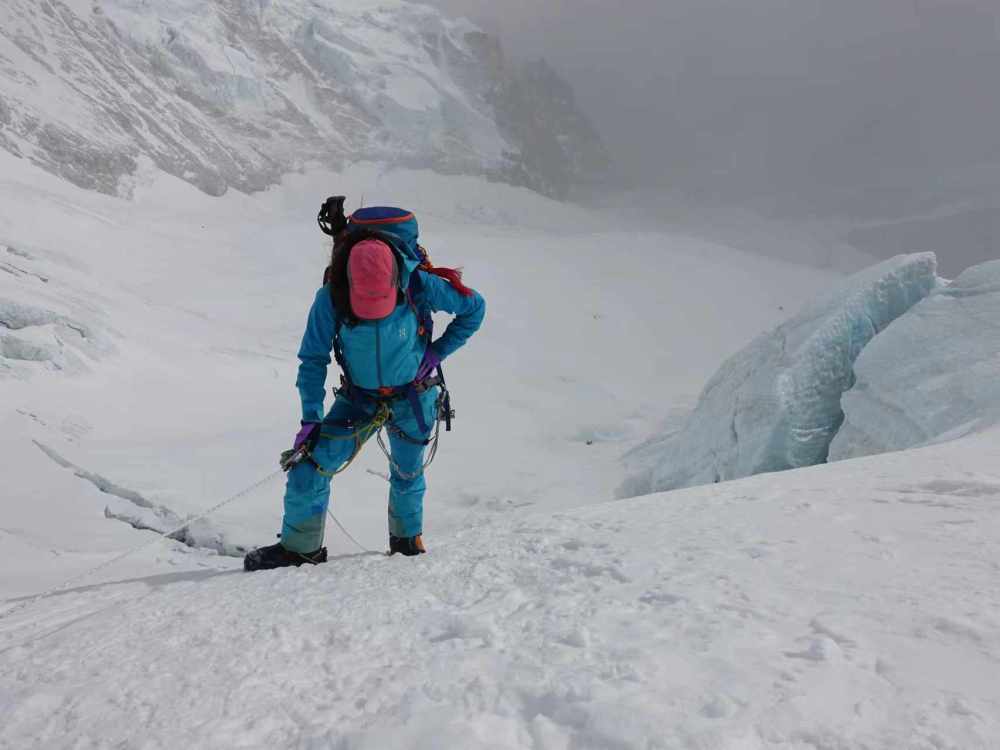
On April 27, 2018, He Jing was on her way to climb Mount Makalu.
However, the pursuit of her passion has also included pain.
In 2021, He Jing set out to conquer Mount Everest without supplemental oxygen,a feat no Chinese climber had yet achieved. “I didn’t just want to fulfill my personal dream—I also hoped to bring honor to my country through my efforts.” However, due to missing the ideal weather window for the summit, He Jing ultimately failed.
One day on the streets of Kathmandu, she bought a map and set out on a solo hike to Mount Everest. The moment she saw the summit, He Jing no longer suppressed her feelings, and she burst into tears, gazing at the majestic snow-capped mountain. “The moment I laid my eyes on Everest, I finally understood—I was meant to be here. If I decide to pursue something, I must give myself a chance. To give up even the chance to try—that’s what true failure is.”
On the morning of May 14, 2022, He Jing finally reached the summit of Mount Everest without supplemental oxygen, becoming the first Chinese woman to achieve this feat.
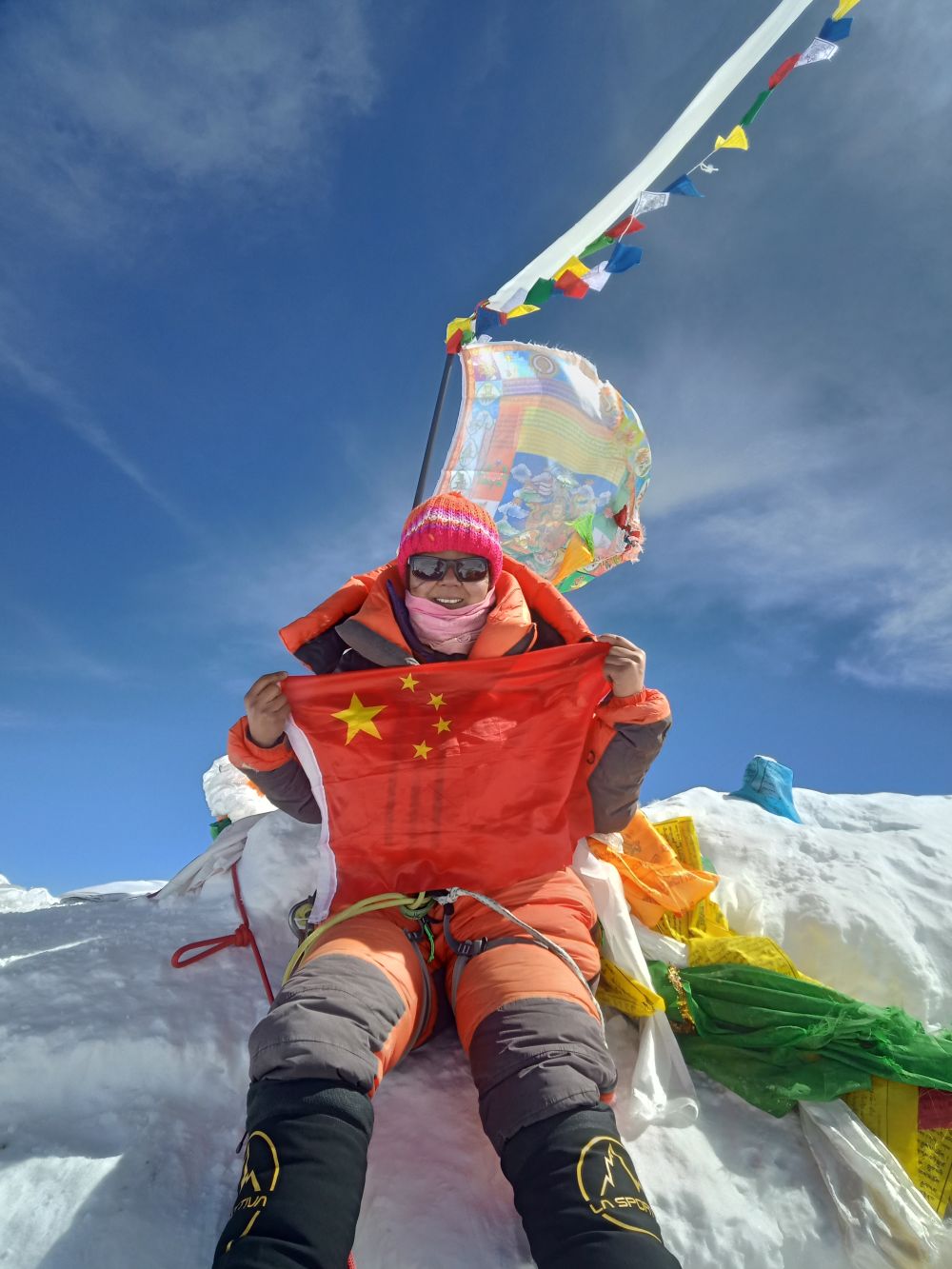
On May 14, 2022, He Jing reached the summit of Mount Everest, the world’s highest peak.
Breakthrough
Starting from Siguniang Mountain, climbing 5,000 meters, then 6,000 meters, and reaching the 7,000-meter mark on Muztagh Ata, the crisp mountain breeze turned colder, the air thinner, and finally it was time to tackle the 8,000-meter peak.
In 2016, He Jing’s first 8,000-meter climb began on Cho Oyu, the world’s sixth highest peak. The standard oxygen supply at the time was two bottles, but He Jing used only one throughout the entire climb. She climbed swiftly, reaching the summit before dawn broke—so early that the mighty Everest across from her remained hidden in the darkness.
“Summitting Cho Oyu convinced me I still had reserves,so I decided to test my limits with an oxygenless attempt,”He Jing said.
Climbing without supplemental oxygen means no oxygen support at any point—and it also requires strict weather conditions. He Jing explained that during such climbs, wind speeds must stay below 20 meters per second, and temperatures shouldn’t drop below -40°C. Temperatures that low risk frostbite, while strong winds rapidly strip away body heat. And without oxygen, blood circulation slows dramatically.

In December 2020, He Jing climbed in the Qinling Mountains.
In 2017, He Jing summited Manaslu—her first 8,000-meter peak without oxygen—a climb on par with Cho Oyu in difficulty. Step by step, she kept pushing her limits, building on each ascent.
For years, He Jing maintained a rigorous training routine, running 50 kilometers weekly across five sessions, cycling a 40-kilometer daily commute, and supplementing with trail running and stair climbing drills to maintain peak mountaineering condition. During her 2021 trip to Nepal, she almost unwaveringly ran a half marathon every day, aiming to summit Mount Everest again the following year.
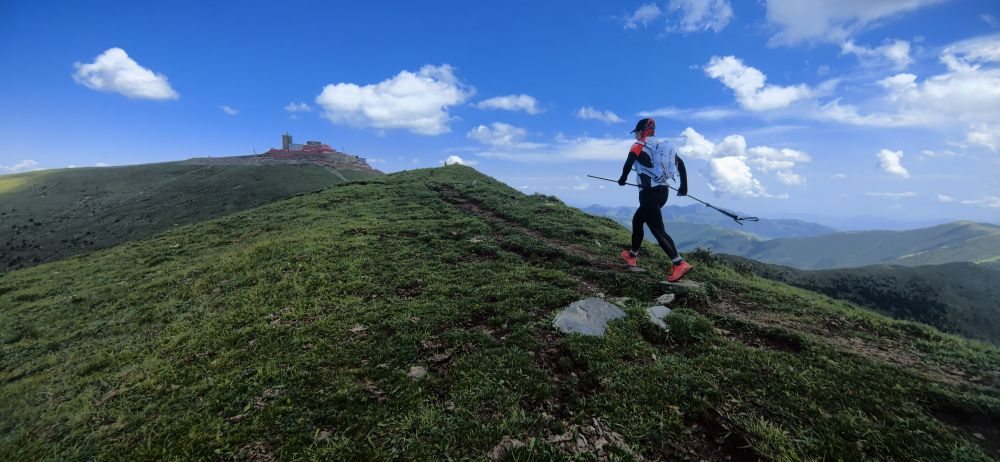
On August 3rd, He Jing hiked in Wutai Mountain for training.
After her oxygen-free ascent of Everest, she went on to complete a climb of Lhotse. In July 2022, she successfully summited both K2 and Broad Peak without oxygen within a week. In 2023, she completed five 8,000-meter peaks without supplemental oxygen in a single year. Behind all these feats lay meticulous planning and an extraordinary reserve of physical endurance and mental strength.

On July 22, 2022, He Jing summited K2.
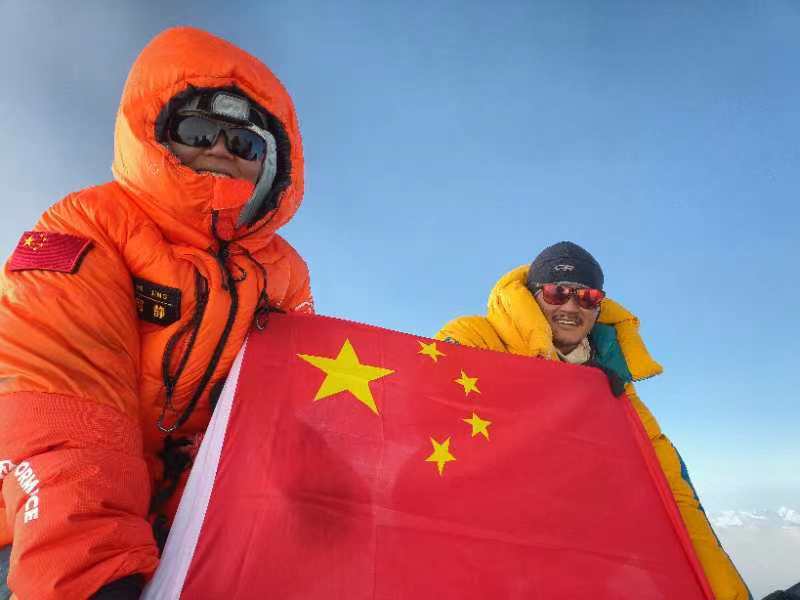
On October 9th, He Jing (left) reached the summit of Mount Shishapangma.
A Role Model
Female Chinese climbers are a rare sight in the realm of 8,000-meter peaks,and climbing without oxygen is even more challenging. Whenever foreign climbers witness a Chinese woman standing atop such a summit without oxygen, they often look on with genuine admiration. “Sometimes I do feel proud,” He Jing said, “to show the world that Chinese climbers are strong too.”
But in He Jing’s eyes, even such achievements are simply building on the paths paved by those before her. “I believe more outstanding Chinese climbers will emerge in the future, bringing new attempts and new breakthroughs. I hope my journey can also inspire and empower more women.”
“It’s because our country has grown stronger and more prosperous that we now have more freedom to make life choices and to pursue the things we love,” He Jing said.
After this glorious achievement, will she keep climbing?
He Jing’s answer: absolutely, yes.
“Many challenges still await me—new routes on familiar peaks, off-season climbs, and more.” Currently, He Jing has one specific goal: a repeat Everest summit via the North Face route.
“Next year will be the 50th anniversary of the first Chinese woman to climb Mount Everest. In 1975, Ms. Pan Duo became the first woman in the world to reach the summit of Mount Everest from the north slope. I hope I can do something to commemorate her. The history of Chinese climbing has been very difficult to reach the present day, and we must honor every pioneer who paved the way.” said He Jing.